The A – Z of tree magic - The Curiosity of Trees, magic, myth & folklore
Alder
Wands. Makes a good wand for wind and weather magic. (Sticks for wands must only be gathered from wind-blown branches not picked or cut from the tree.)
A Secret doorway for fairy folk to pass from one realm to another.
Talisman - Alder wood is said to protect the heart and chest and talisman were worn about the neck.
Alder wood makes excellent gunpowder.
Some people feared Alder - The cut wood turns orange it was thought to be bleeding. In Ireland it was considered unlucky to pass one on a journey.
It is soft-wood and porous but does not rot in water, so was used for boats and sluice gates. Venice is built on Alder piles.
Modern magic: it has nitrogen fixing nodes on its roots which improve soil fertility so can be a tree used to reclaim degraded soil/wasteland.
Apple
The celts considered the Apple to be the food of the gods. A symbol of plenty and abundance and bad luck to cut them down. “An Apple A Day Keeps the Doctor Away”
The old ritual of wassailing is still practiced in popular cider producing areas of the UK – It consists of blessing the fruit trees, by singing, dancing drinking, and pouring cider on the tree roots. People also often make a loud noise banging pan lids and the like to scare away bad spirits and call in a big harvest for the coming year.
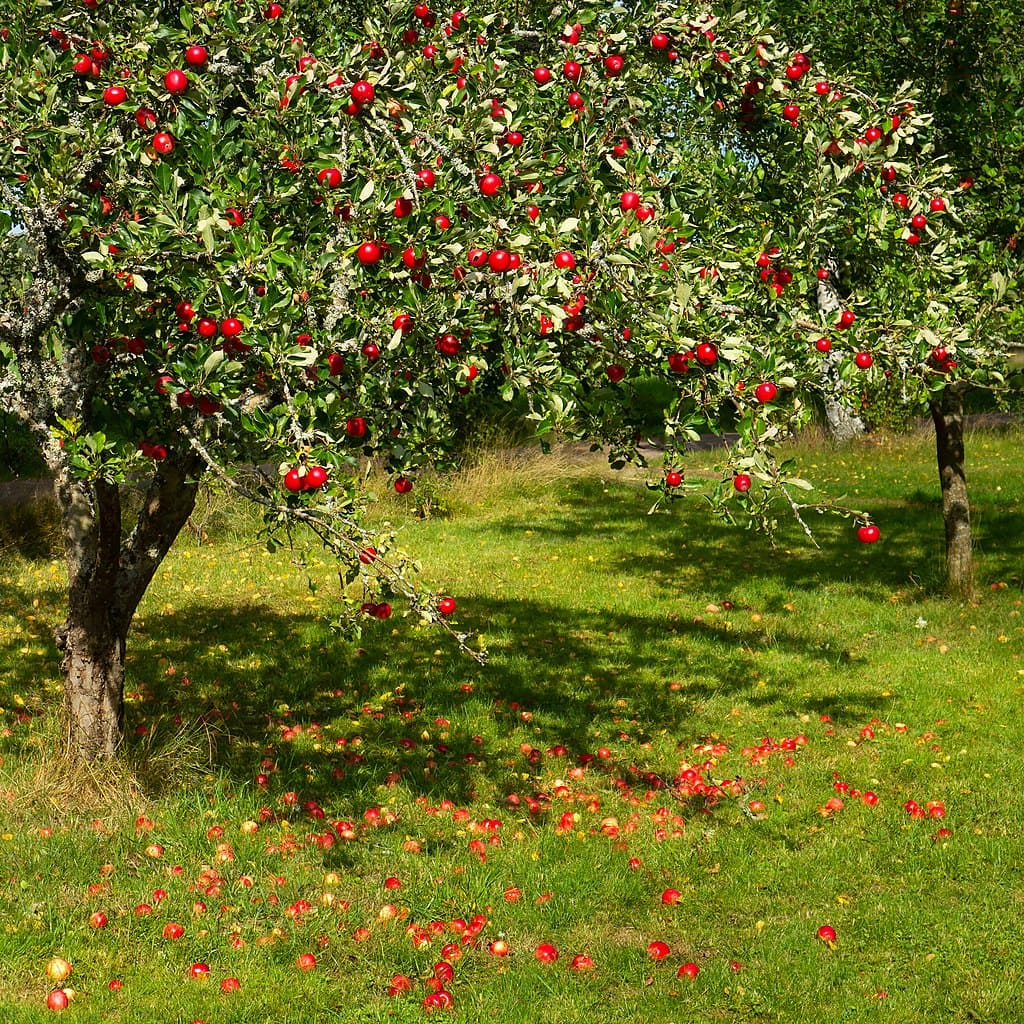
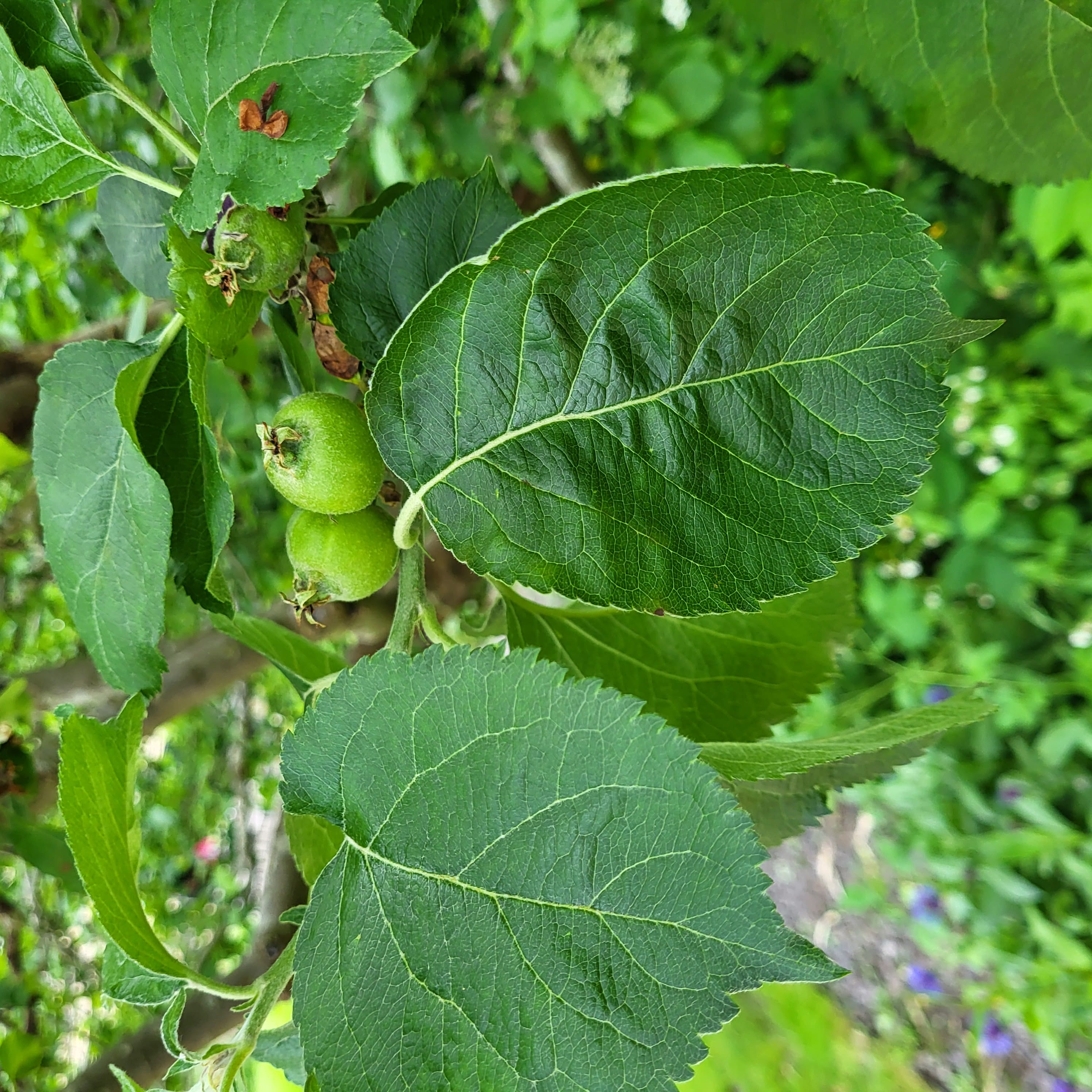
Ash
Good for Spears, bows, arrows.
Odin & Thor the God of Thunder, possessed magical spears made of Ash wood. Mortals’ spear shafts, arrow shafts were also usually made of ash.
Inner and outer worlds linked, in Norse Viking mythology, ash was referred to as the 'Tree of Life' Yggdrasil.
In Britain we regarded ash as a healing tree. The ash tree was thought to have medicinal and mystical properties and the wood was burned to ward off evil spirits. New-born babies would be given a spoonful of ash sap, and sick children would be passed through the cleft of a tree or sapling in the hope that it might cure them.
Amazingly, the leaves can move in the direction of sunlight, and sometimes the whole crown of the tree may lean in the direction of the sun. It is used for making tools and sport handles, including hammers, axes, spades, hockey sticks and oars. It is one of the toughest hardwoods and absorbs shocks without splintering.
Very sadly Ash is suffering from a disease called ash-dieback which means many of the species are dying. So we need to get planting trees.
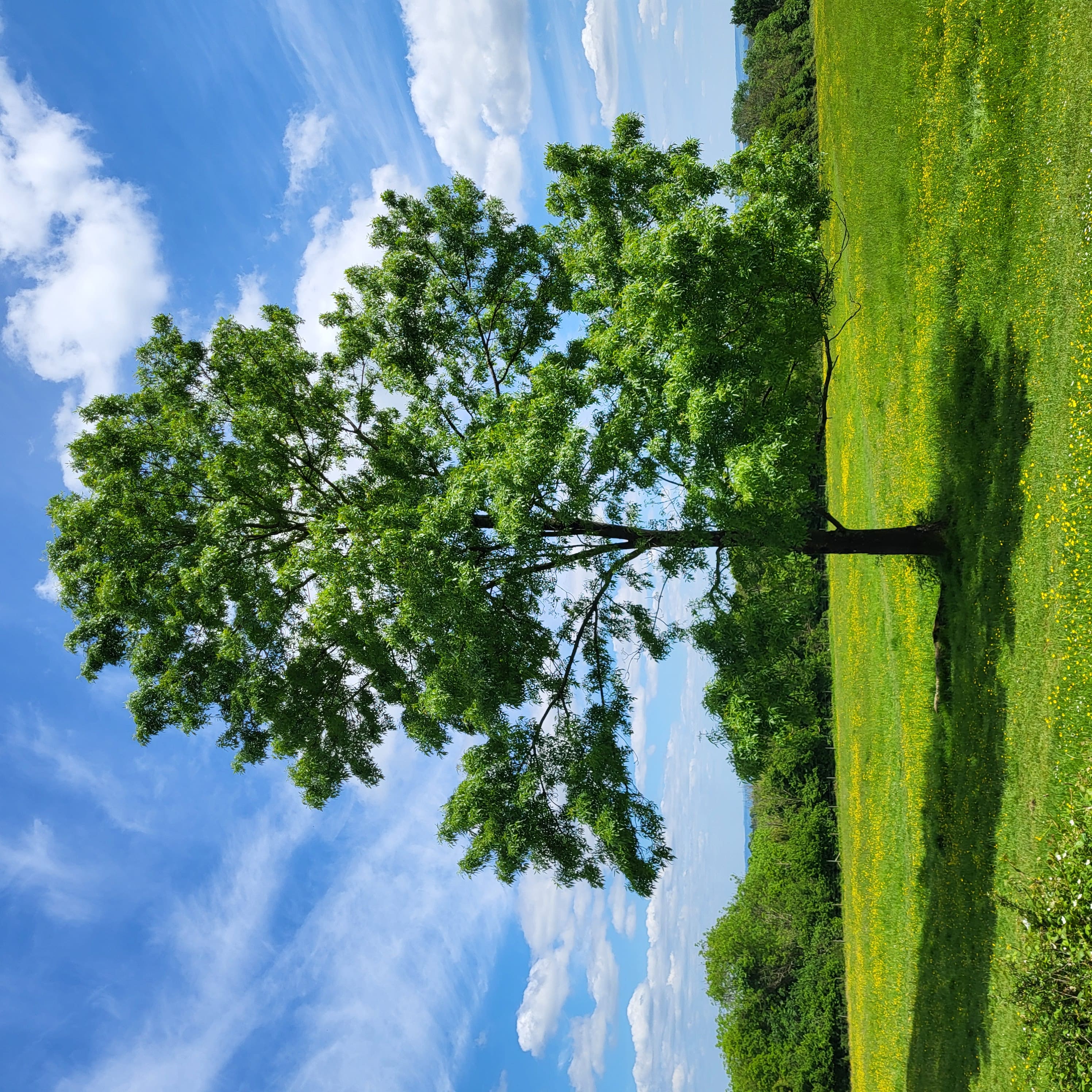
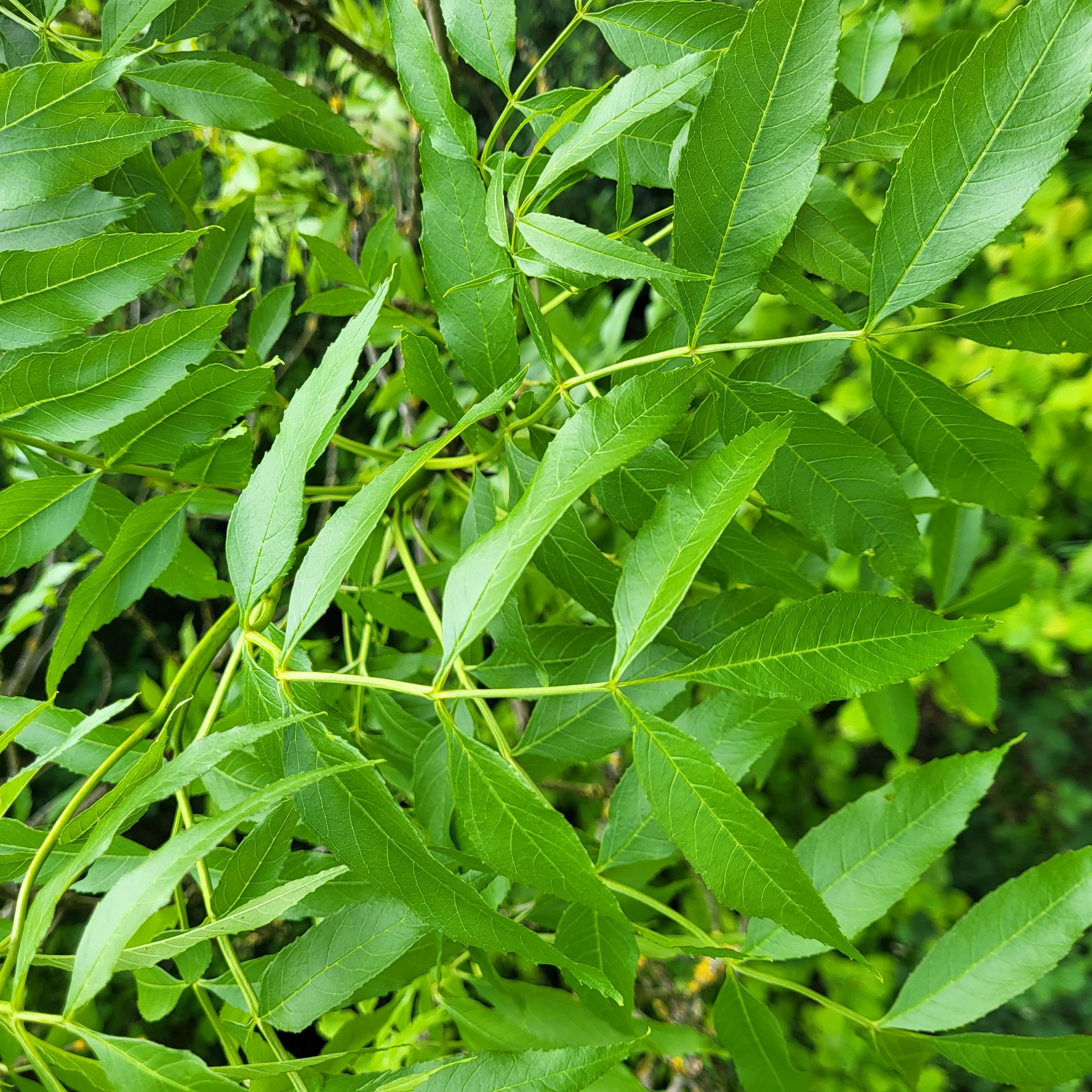
Aspen
A crown made of aspen leaves was said to give its wearer the power to visit and return safely from the Underworld. Aspen crowns found in ancient burial mounds may have been included to allow the spirits of the deceased to be reborn.
Aspis the Greek name for Aspen, means shield, and Ashwood was used to make shields, both because it was light weight, and it was thought to have magical properties of protection. Aspen wood was also used for making oars and paddles, surgical splints, and wagon bottoms.
There is a wonderful Tree in Utah that is known as The Pando, a quaking aspen. Which I am including here as it was a big inspiration for me in the book.
The Pando is believed to be the largest, most dense organism ever found at nearly 13 million pounds. The clone tree spreads over 106 acres, consisting of over 40,000 individual trees. Although it is hard to estimate the exact age of a clone tree, it is estimated to have started at the end of the last ice age. Some of the trees are over 130 years old but the root system is believed by some to be 80,000 years old, which would make it the oldest living organism in the world.
There is a Ute Indian tribal legend, which says the branch scars on the trunks resemble eyes and the eyes watch the young hunter in the forest to ensure they are respectful and reverent. So, it is known as the forest of eyes, the legend says, it is one big eye.
Beech
Protection. Divining, medicinal and food, old knowledge.
“It is said no harm could befall a traveller who sheltered under the branches of a beech tree.”
Beech is associated with femininity and is often considered the queen of British trees.
Forked beech twigs are also traditionally used for divining. It was thought to have medicinal properties – beech leaves were used to relieve swellings, and boiling the leaves could make a poultice.
The edible nuts, or masts, were once used to feed pigs, and in France they are still sometimes roasted and used as a coffee substitute. Native truffle fungi grow in beech woods. These fungi are ectomycorrhizal, which means they help the host tree obtain nutrients in exchange for some of the sugar the tree produces through photosynthesis.
Beech timber is used for a variety of purposes, including fuel, furniture, cooking utensils, tool handles and sports equipment. The wood was traditionally used to smoke herring.
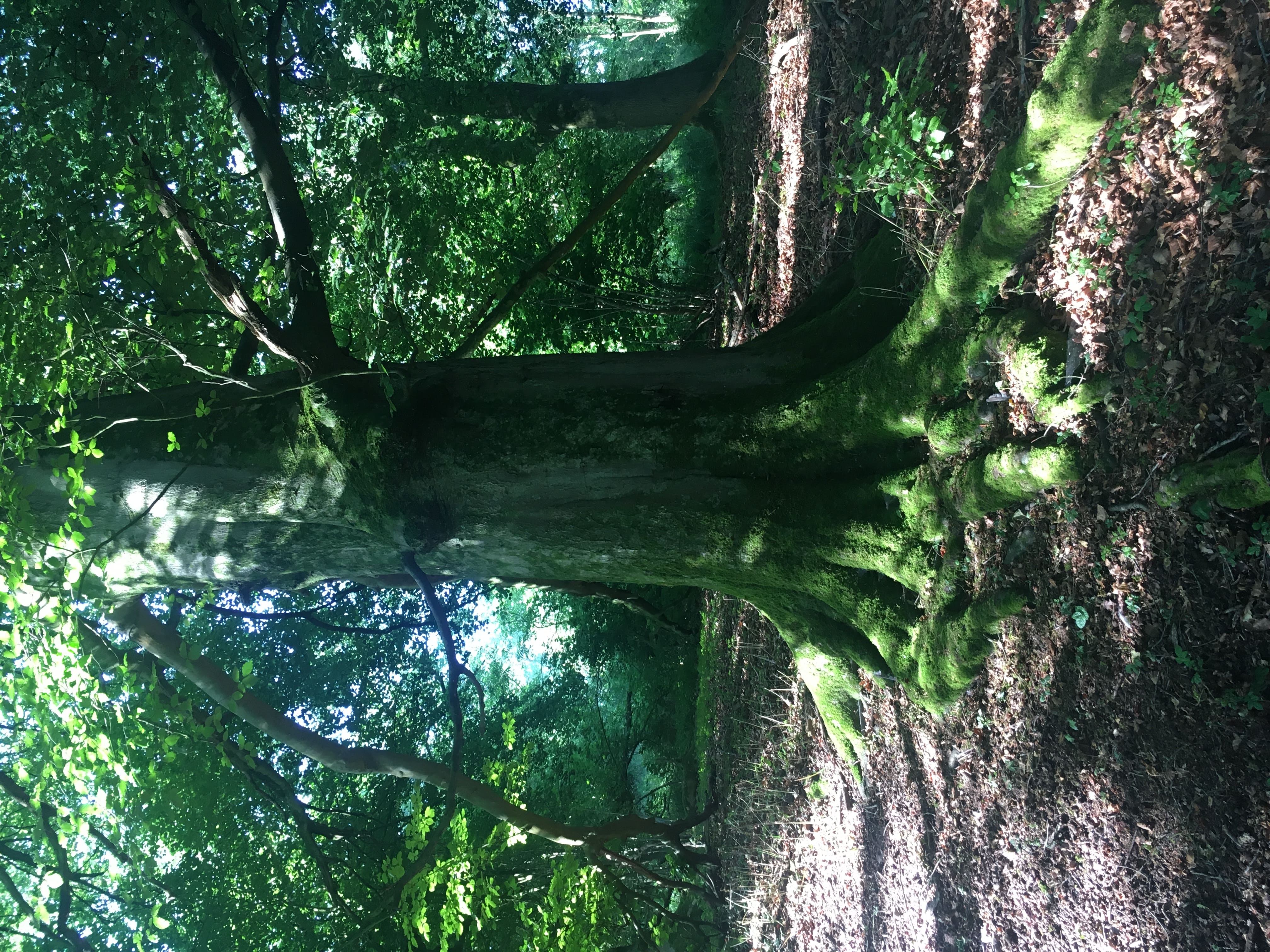
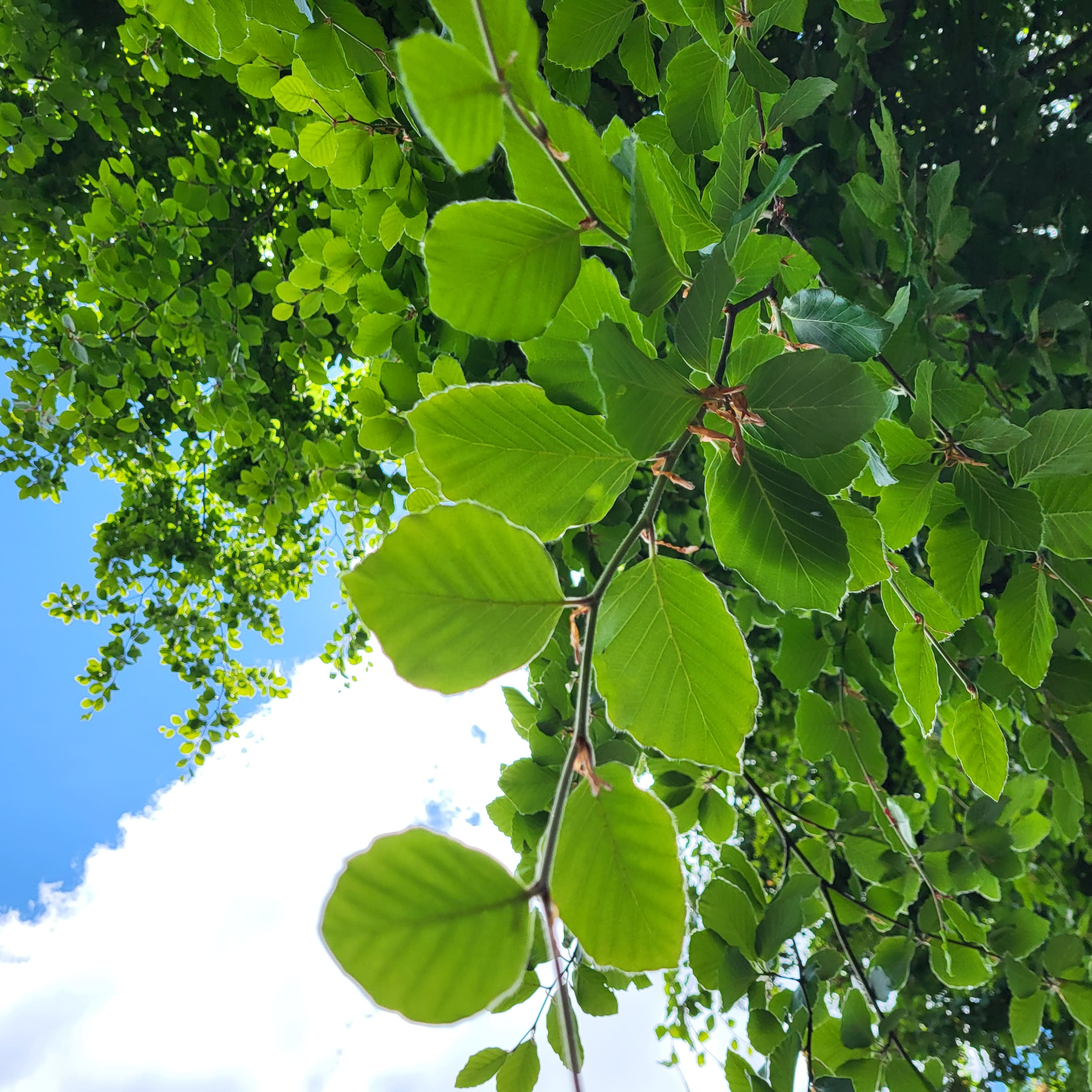
Birch
In early Celtic mythology, the birch symbolised renewal and purification. A symbol of love and fertility. Broomsticks are made of birch. A bundle of birch twigs would be used to brush away evil spirits or the spirits of the old year or to 'purify' their gardens.
When Birch is burned it helps concentration and uplifts the spirit.
Dried birch leaves were used to charm a baby’s cot – so the baby grew strong and had best start in life.
In Scottish Highland folklore, a barren cow herded with a birch stick would become fertile, and a pregnant cow would bear a healthy calf.
Birch wood is tough and heavy, making it suitable for making furniture, handles and toys as well as bobbins, spools and reels for the Lancashire cotton industry. The bark is used for tanning leather.
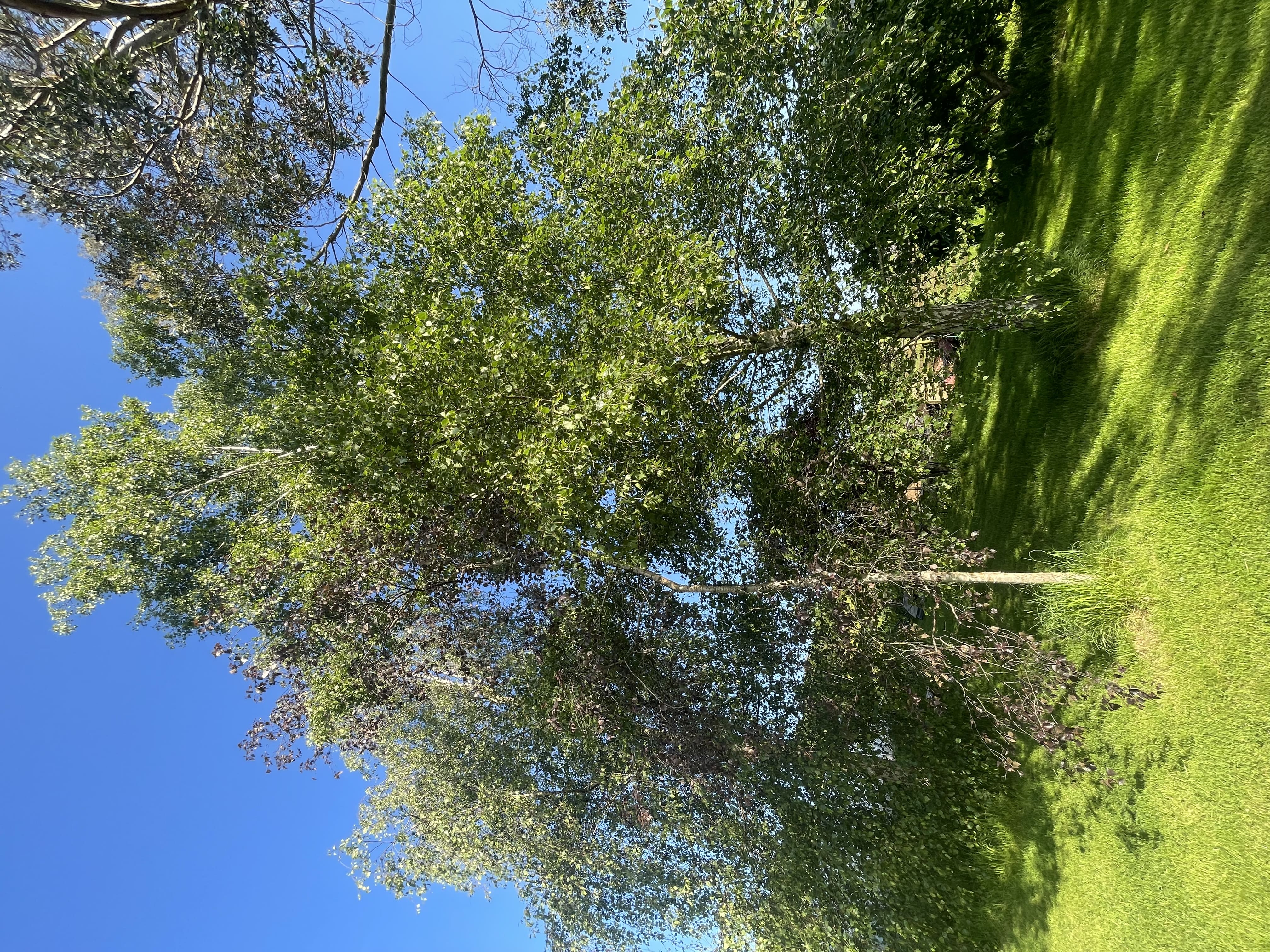
Cedar
Purification and protection. Represents incorruptibility and eternal life. The oil has been used to make cough medicines and antiseptic. Cedar was used for Embalming the dead and as a Moth repellent.
Crab Apple
Long been associated with love and marriage. It was said that if you throw the pips into the fire while saying the name of your love, the love is true if the pips explode.
Crab Apple wood was burned by the Celts during fertility rites and festivals, and Shakespeare refers to crab apples in A Midsummer Night's Dream and Love's Labour Lost. The pinkish wood has an even texture and makes good quality timber very good for carving and turning. It also makes a sweetly scented firewood. In Ireland a yellow dye was extracted from the bark to colour wool.
Dogwood
The wood of the dogwood tree is one of the hardest and it is said that it was chosen to make the cross on which Jesus Christ was crucified. The origin of the name comes from the straight twigs which were used to make butchers’ skewers. These skewers were called 'dags' or 'dogs', so the name means 'skewer wood'.
The bark is rich in tannins and was once used in traditional medicine as a substitute for quinine - a drug that’s used to treat malaria. The leaves can be made into a poultice to cover wounds.
Elder
‘The end in the beginning, and the beginning of the end’. Elder has always been considered a protective tree like Rowan. Plant Elder at the back door of the house (rowan at the front). But do not cut one down without asking the elder hag and never light a fire with Elder – as it is said to bring bad luck.
Never use Elder for child’s cradle, it will give witches access to baby.
Fairies like music made from instruments made from Elder. The Wood is excellent for making whistles, pipes as you can hollow it out.
Best time to meet fairies is under Elder Tree at midsummer. It is best advised not to sleep under an elder tree. The aroma repels flies, people hung it in doorways, attached to horses’ harnesses, planted the trees near a dairy. But any food left under an elder tree over night was considered a gift to the fairies and not to be eaten.
Washing your face in dew gathered from elderflowers is meant to keep you looking young. It has been called “the medicine chest of the common people” and the roots, bark, berries, leaves and flowers can be used in different ways but must be cooked as are mildly poisonous. Medicines Elderberry is very high Vit C and good for coughs and sore throats. Elderflower tea is a remedy for colds and flu.
Hawthorn
I could write page on Hawthorn. As it is an amazing medicinal tree. The white blossoms a sure sign of spring. In Celtic mythology it is the most sacred tree and must be treated with great respect. It symbolises love and protection. And is known as the Fairy Tree, as fairies live under the Hawthorn as its guardians; so it is also known as the tree of enchantment where fairies may lure human mortals into the fairy world. Check out A Midsummers Night’s dream by William Shakespeare, the dream happens under a hawthorn tree.
The young leaves, flower buds and young flowers are all edible and good in tea, and we used to call the young leaves ‘bread and cheese’ and would eat them on walks. The haws can be eaten raw but may cause mild stomach to upset, but are great to make Ketchups, wines, and teas. Hawthorne is said to be good for the heart. But you must ask the Hawthorn tree before picking the flowers or fruits.
Original May poles were made of hawthorn, along with cabinets, boxes, tool handles and boat parts.
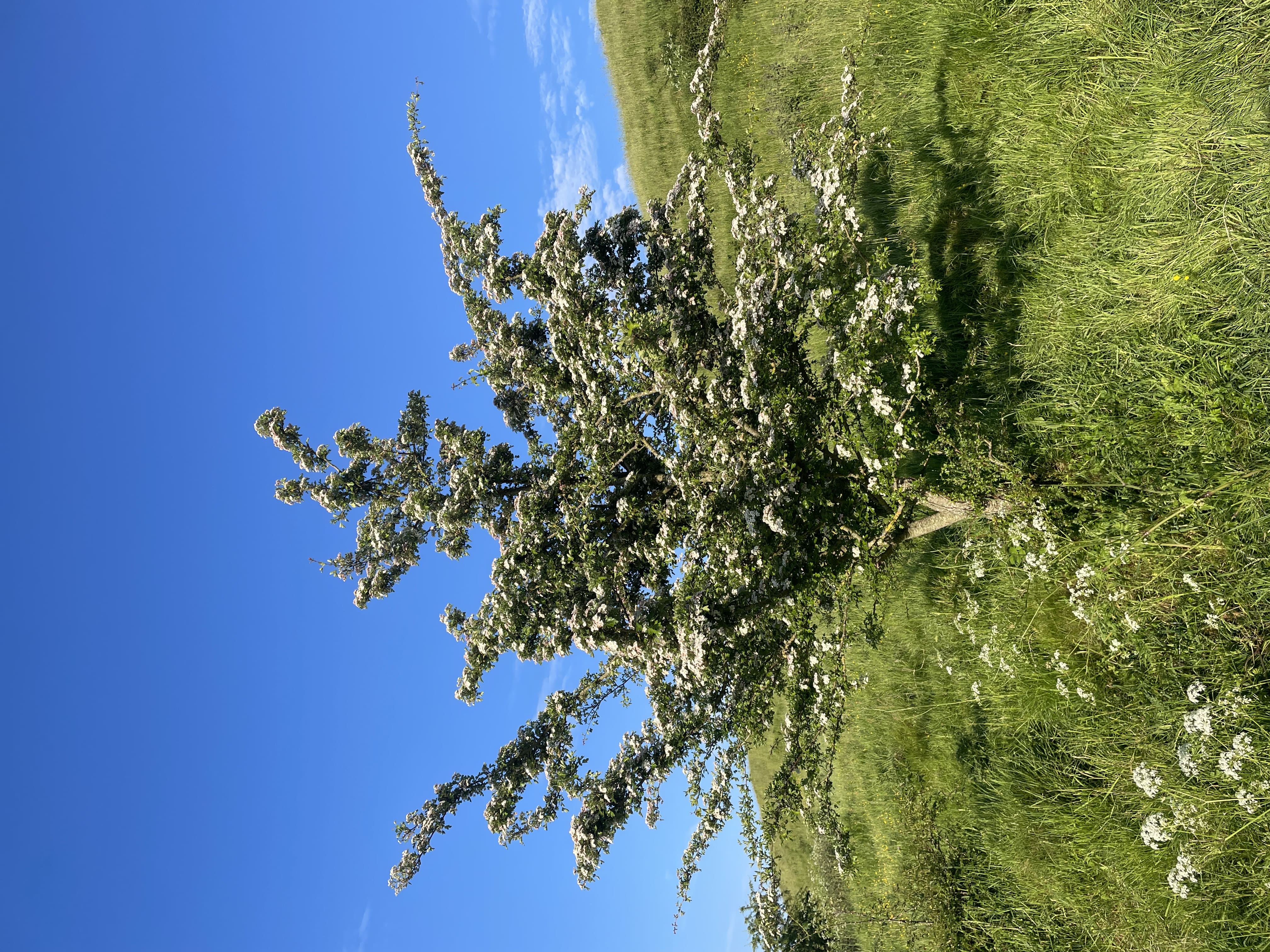
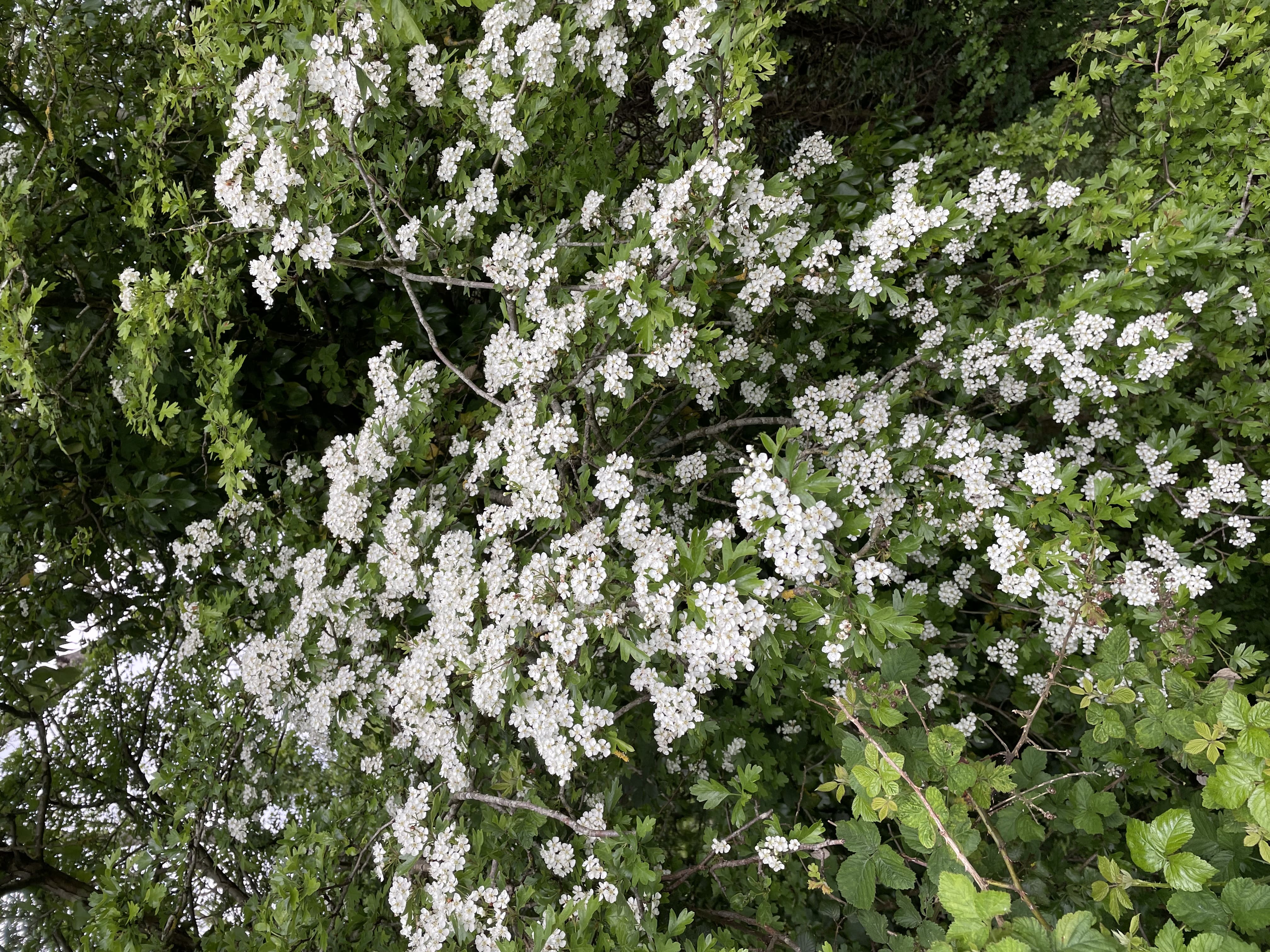
Hazel
Divining, fertility, charms.
Intuition, straight to the source. Hazelnuts were associated with knowledge and wisdom, Another magical tree. A hazel rod is supposed will protect against evil spirits, as well as being used as a wand and for water-divining. In some parts of England hazel nuts were carried as charms and/or held to ward off rheumatism.
In Ireland hazel was known as the 'Tree of Knowledge’, and in medieval times it was a symbol of fertility. Stirring Jam with hazel twigs prevents it from being stolen by fairies.
Hazel wood can be twisted or knotted, and so was used in many ways including water divining sticks, hurdles, and furniture. Hazel is valued for its nuts, or 'cobs' which feed us as well as a range of birds and small mammals.
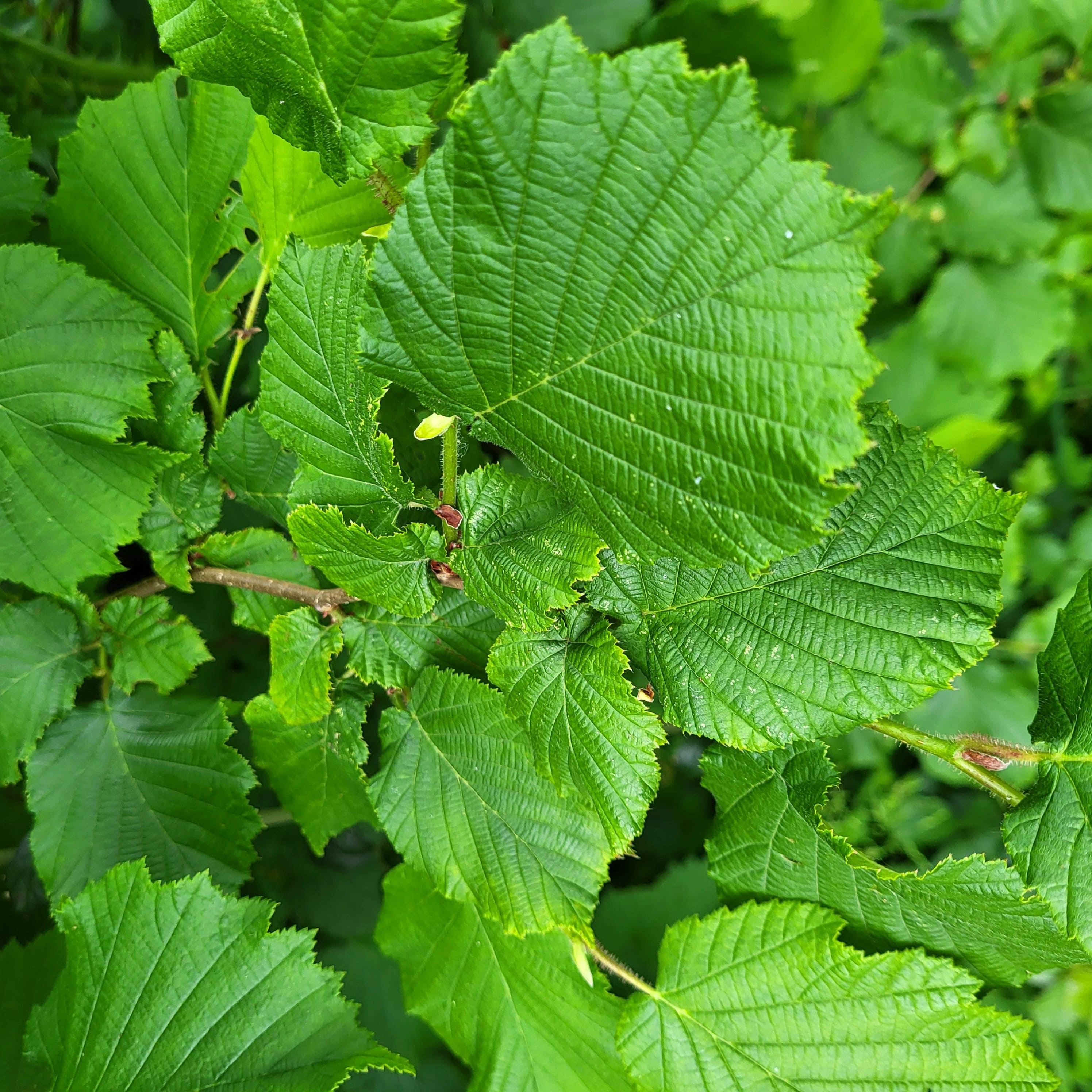
Holly
Fertility, a charm against witches, goblins, and the devil. Holly branches have long been used to decorate homes in winter to keep evil away and as a charm against witches and goblins. Holly was often planted as a boundary tree to prevent the passage of witches who were known to fly along the top of hedges.
And it is considered unlucky to cut down a holly tree. And if picking holly branches, you should ask permission before you cut a branch from a Holly and give the tree a gift back. The Holly tree was seen as a fertility symbol.
Holly was used as protection from Lightning strikes and in European mythology it was associated with the thunder God Thor. Folk lore said Holly was also meant to help with control, especially horses, and most whips for horse drawn coaches and ploughmen were made from holly.
Hornbeam
Good for a tonic against exhaustion
A tonic made from hornbeam was said to relieve tiredness and exhaustion, and its leaves were used to stop bleeding and heal wounds.
Hornbeam timber is a pale off white and is extremely hard and strong, used for furniture and flooring and Romans used hornbeam to make their chariots as it was so strong.
It was also used for making ox-yokes (a wooden beam fitted across the shoulders of an ox to enable it to pull a cart), butchers' chopping blocks and cogs for windmills and water mills.
Juniper
Juniper is said another tree said to be a deterrent against the Devil and witches. It was hung over doorways on the eve of May Day and burnt on Halloween to ward off evil spirits. It was said that you would prosper if you dreamed of gathering juniper berries in winter.
The most famous use of juniper berries is in the flavouring of gin. The aromatic wood has a warm, sandy, golden colour and is used for wood turning and carving as well as for burning to smoke food. The essential oil is also used in aromatherapy and perfumery.
Lime
The flowers provide nectar and pollen for insects, particularly bees. Limes are associated with fertility. In France and Switzerland, limes are a symbol of liberty, and the trees have been planted in many places to celebrate different battles.
Lime bark was traditionally used to make rope. The wood does not warp and is still used today to make sounding boards and piano keys and Morris dancing sticks.
London Plane Tree
I am including here as it is a tree that is good at fitting in and Camouflage and can be found in many city parks. And is known for absorbing pollution which makes it an amazing tree for cities and worth a mention for its modern magic powers.
Maple
Maple is not a particularly magical tree, but in parts of Europe it was believed that maple branches hung around a doorway could prevent bats from entering the building. The herbalist, Culpepper, recommended maple leaves and bark to strengthen the liver.
Field maple produces the hardest, highest density timber of all European maples. It is a warm creamy-brown colour with a silky shine. Traditional uses included woodturning, carving and making musical instruments, particularly harps.
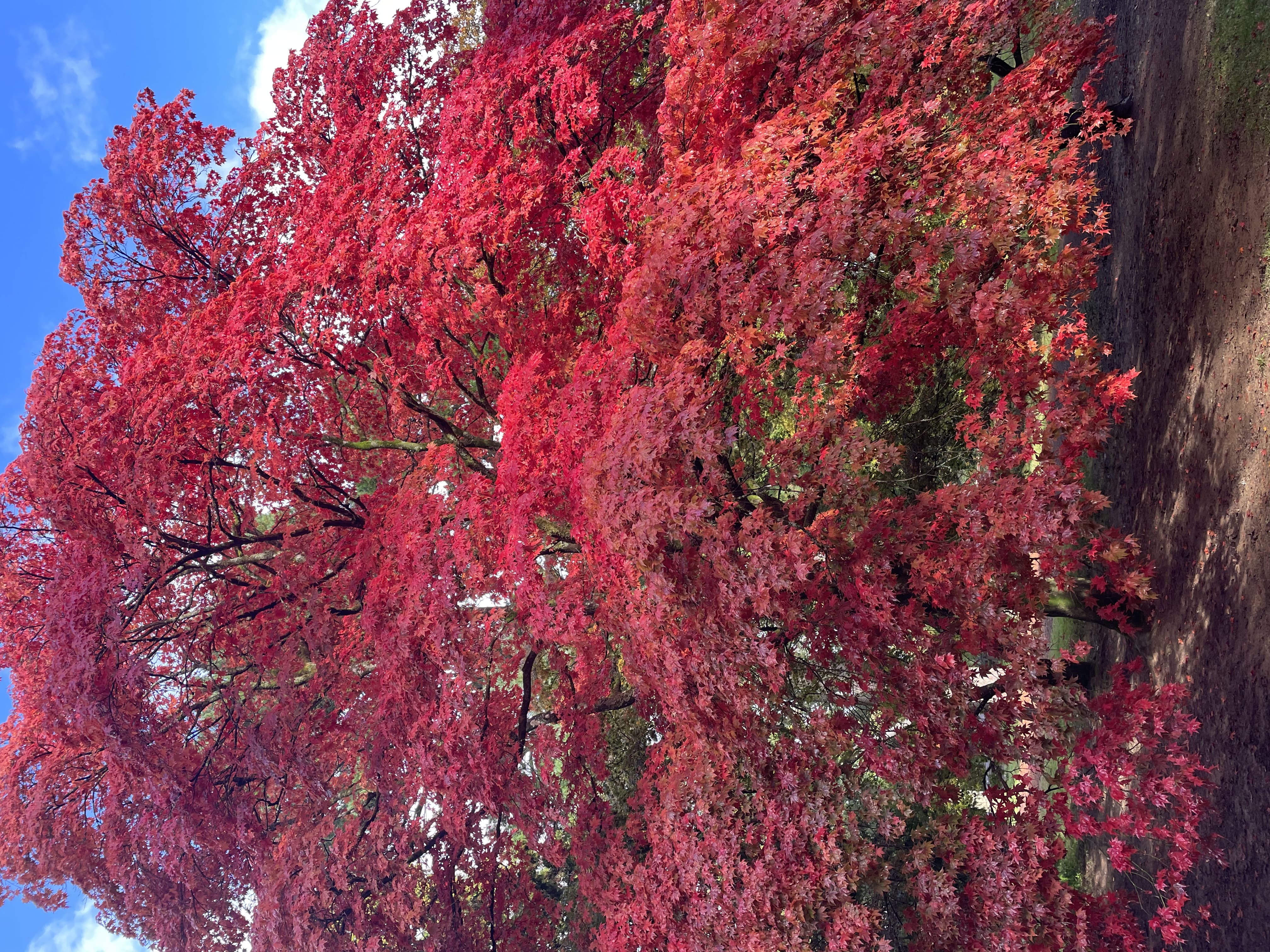
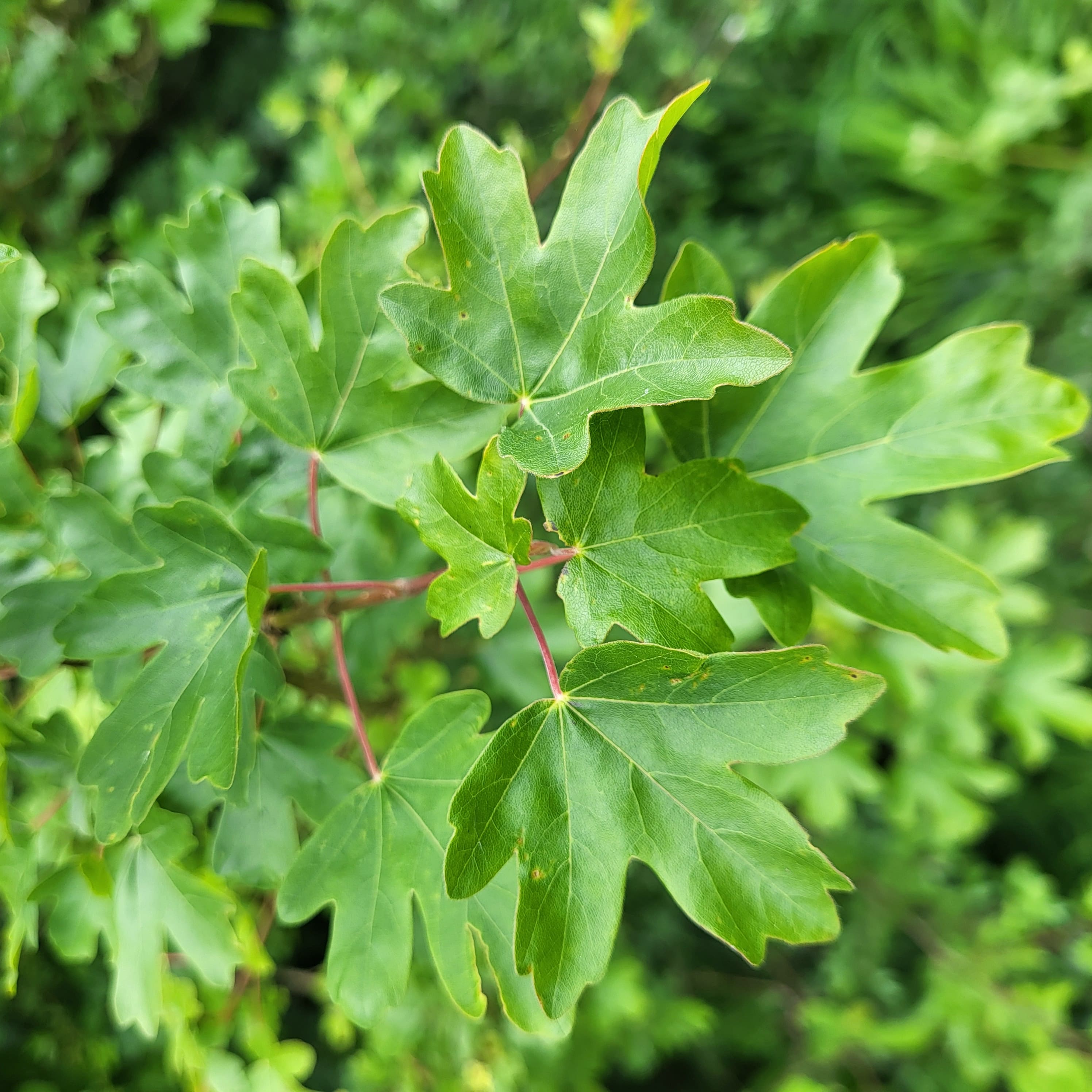
Monkey Puzzle
It is said that speaking while passing one will bring bad luck or cause you to grow a monkey's tail. There is an old Fenland belief that planting a monkey puzzle on the edge of a graveyard would prevent the Devil from entering during a burial. This link with the Devil extends country-wide; many even believing that the Devil lives in the monkey puzzle tree.
Oak
Oak was known for being solid, for protection and a doorway to the mysteries.
The acorn is considered a symbol of immortality. A very important woodland tree. In England the oak has for centuries been a national symbol of strength and survival. Sacred to many cultures and to many gods including Zeus (Greek), Jupiter (Roman) and Dagda (Celtic).
Each of these gods ruled over thunder and lightning; and Oak trees are prone to lightning strikes as they are often the tallest living tree in the landscape. Druids were known to practice their rituals in oak groves. Roman emperors and Kings were known to adorn themselves with crowns of oak leaves and King Charles II hid in the giant oak tree at Boscobel House when hiding from the Round Heads.
The festive Yule Log was traditionally cut from oak. Traditionally the leaves, bark and acorns were believed to heal many medical ailments including diarrhoea, inflammation, and kidney stones. Acorns can be roasted and made into flour for bread making. Tannin found in the bark has been used to tan leather since at least Roman times. But acorns are poisonous to horses and cattle, but pigs can consume them safely in moderation.
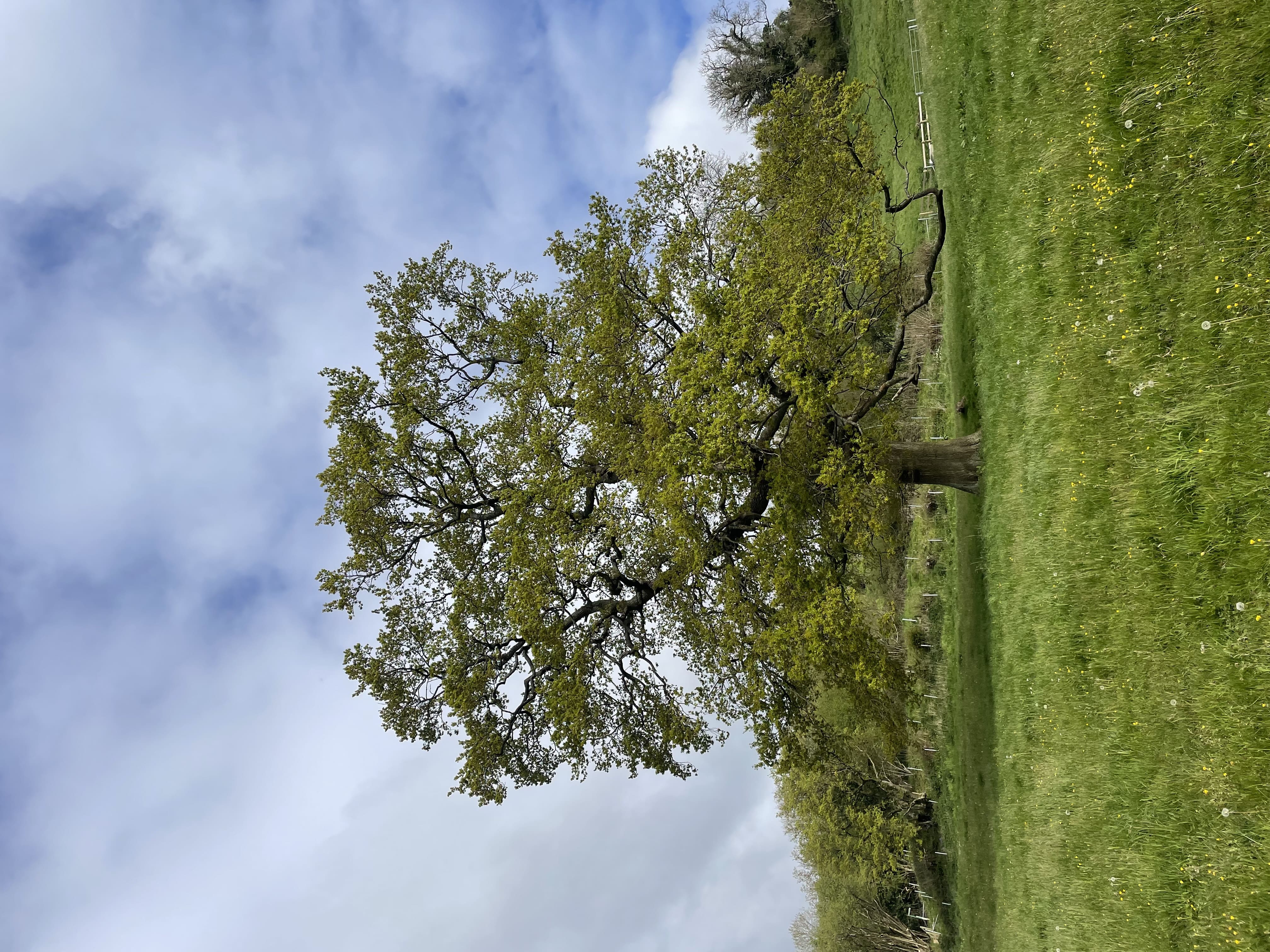
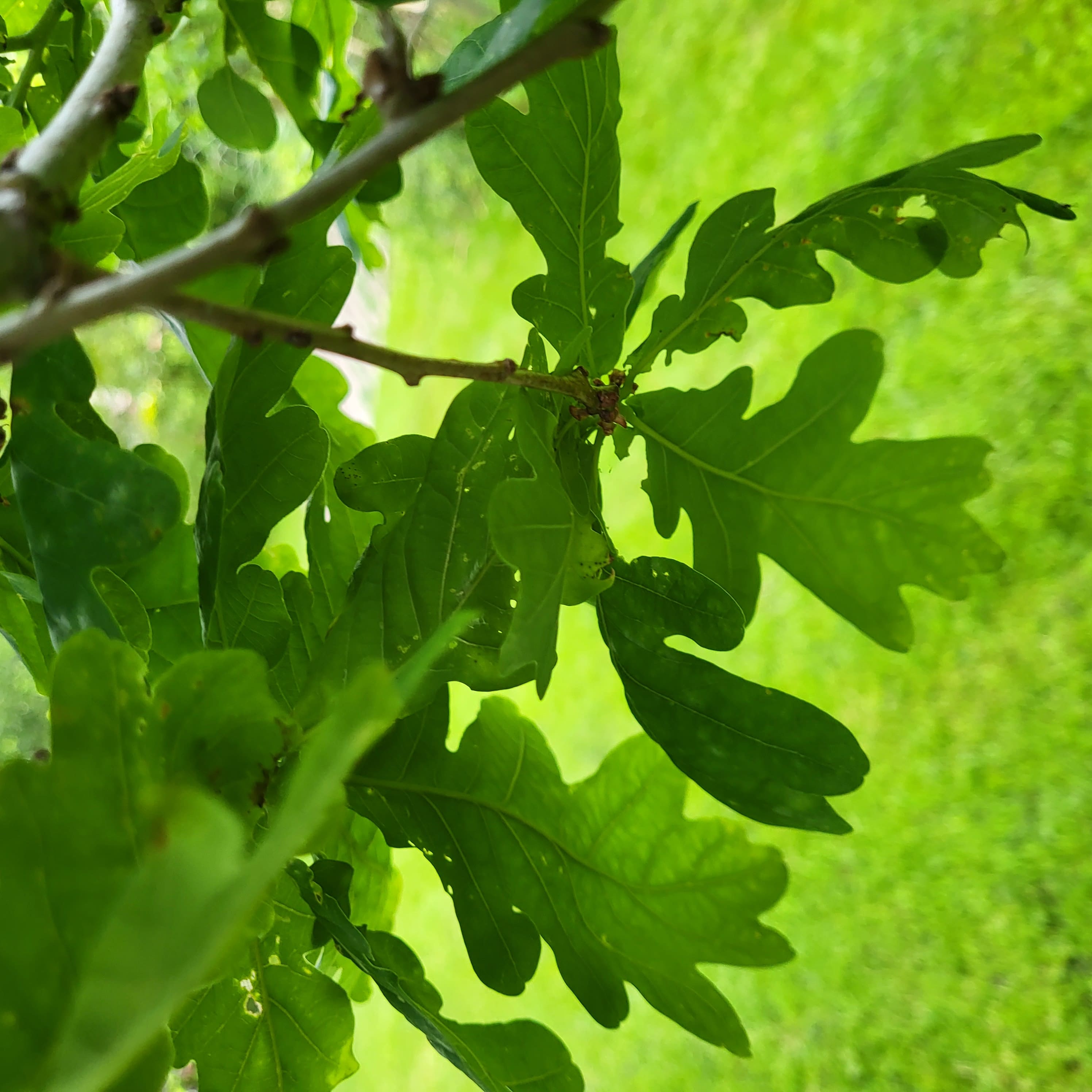
Pine
Scots’ pines have been used as land markers on old trails as their height helps people see in bad weather. And Rope can be made from the inner bark, tar from the roots and a dye from the cones. Dry cones can be used as kindling for fires.
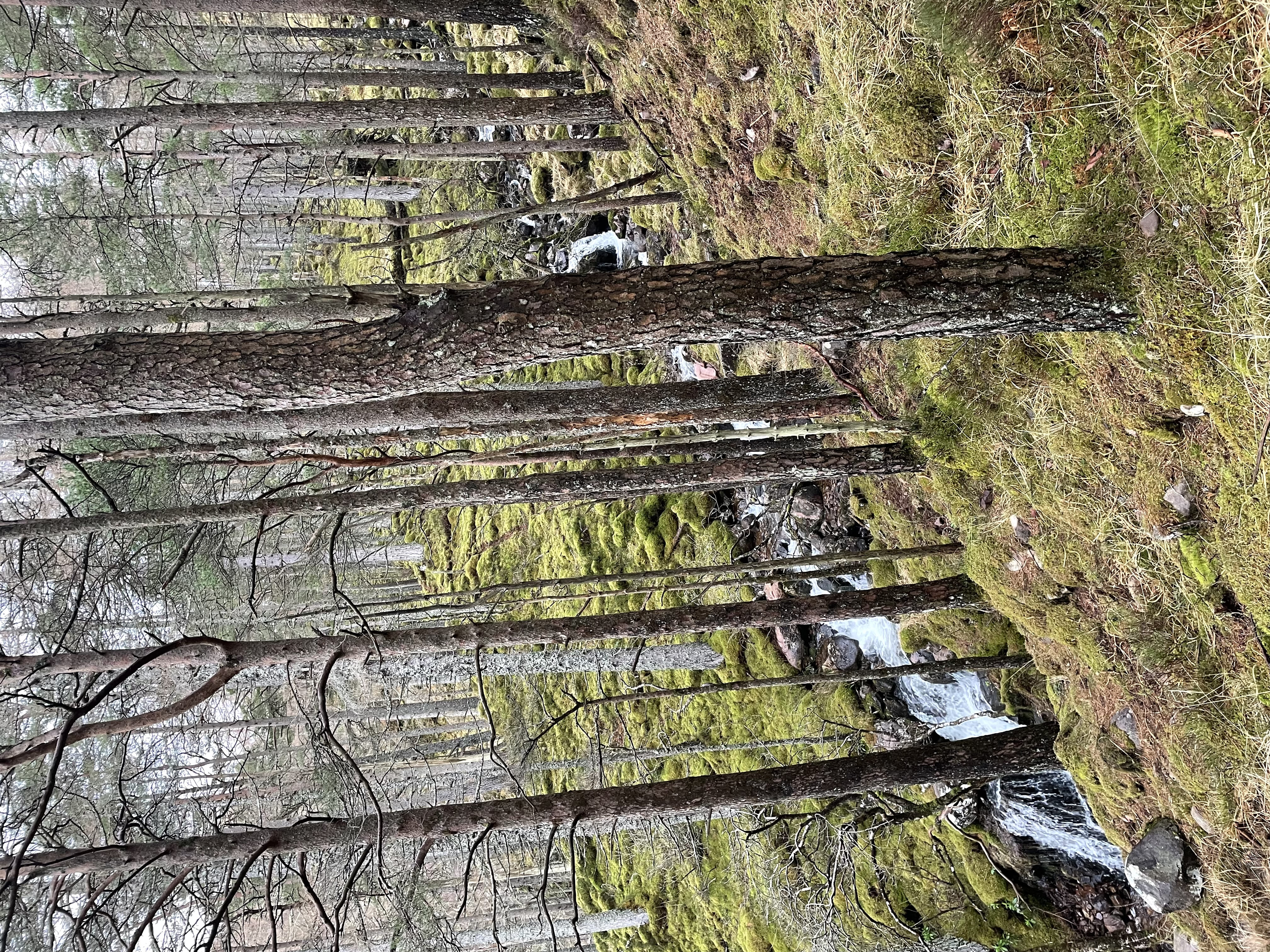
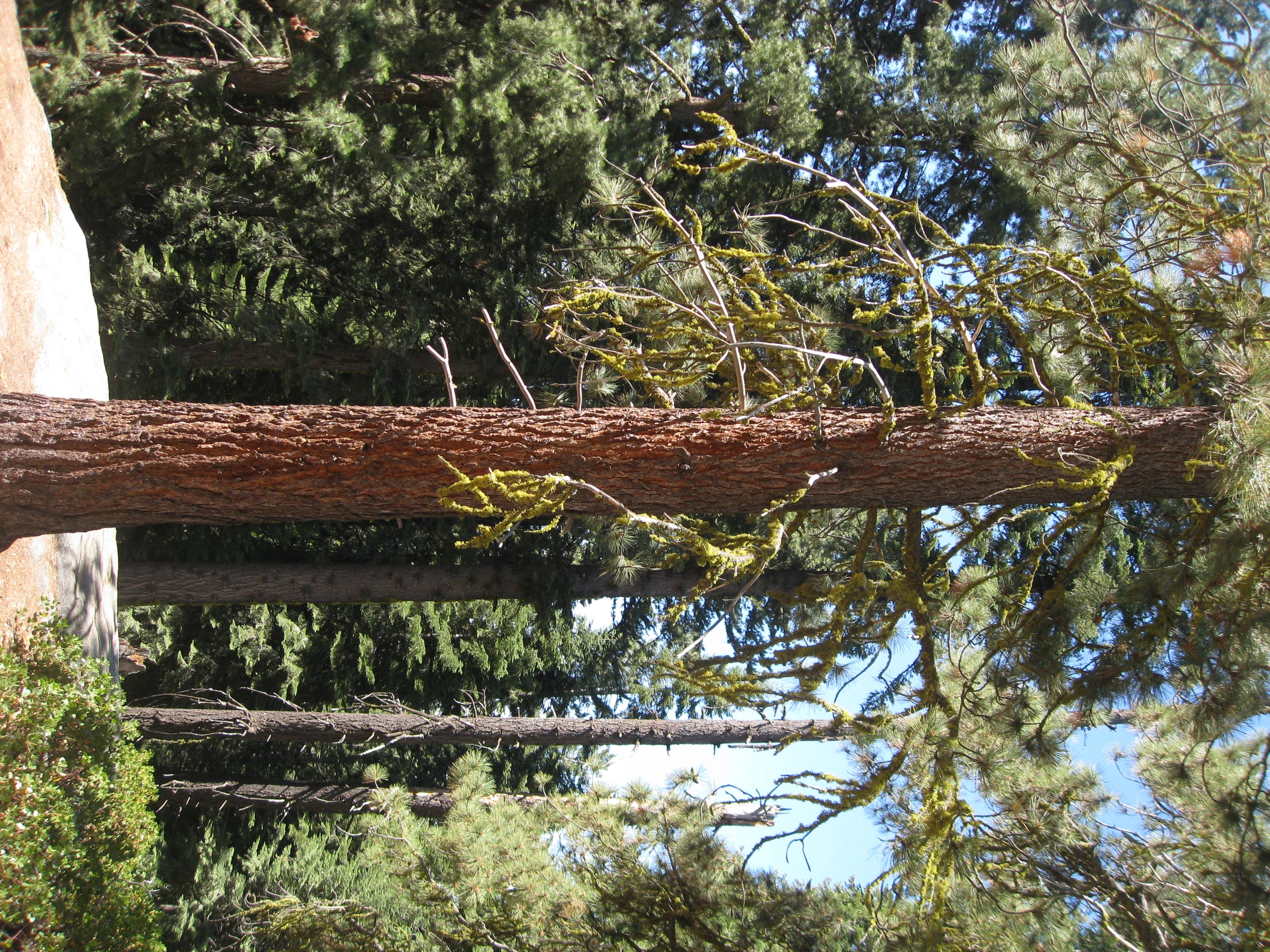
Rowan
It was thought to be a home for the faeries, so it was used to protect against witchcraft and enchantment and control of all the senses. It was often carried by individuals and hung from cattle. Also, it was advised to build a child’s cradle or cot from Rowan for protection.
Crosses were made and hung inside houses on May Day each year to ward off bad spirits.
Willow
A more important tree than many people realise. Being a water loving tree, and a fast growing tree it was thought to be connected to the lunar (moon) rhythms and to Night vision.
Modern Magic - An amazing medicinal tree - For more than 3000 years willow bark has been used as a traditional medicine. The active agent within willow bark is salicin, which has formed the basis of the discovery of our common painkiller aspirin. And now scientist have found other compounds in willow bark which they think can be used to treat some cancers.

Yew
Rebirth and everlasting. Because Yew trees can grow from thousands of years they are known as wise trees and Yew trees were used as symbols of immortality, death, and resurrection. Often referred to as gate keepers to the underworld. It is considered bad luck to cut down a Yew Tree.
Yew trees have long been associated with churchyards and there are at least 500 churchyards in England which contain yew trees older than the building itself. And as some say churches were built on pagan sites it may be that the yew trees were part of a sacred site before it was a church. The longevity of yew, as well as its toxicity, has seen it associated with death and resurrection in Celtic culture. Some of the oldest individuals, such as The Fortingall Yew in Scotland, could between 3,000 and 9,000 years old.
The wood was used to make long bows and tool handles. One of the world's oldest surviving wooden artifacts is a yew spear head, found in 1911 at Clacton-on-sea, in Essex, UK. It is estimated to be about 450,000 years old. Modern Magic - Anti-cancer compounds have been found in the harvested from the foliage of Taxus baccata the Yew. The Yew is poisonous. Shakespeare refers to this in Macbeth – when he made a poisonous drink he used ‘slips of yew silvered in the moon’s eclipse.”
Inspirational Trees
Fun facts about some extraordinary trees that have stood for centuries and as such are embedded in the history of the community and location that they are part of. Maybe some of these trees are near you and you can visit them.
Sites of magic and myth, battles and uprisings, inspiring poems, art, songs, and even scientific thinking. Some of these trees were the inspiration for the book.
Newton’s Apple, Woolsthorpe Manor Lincolnshire
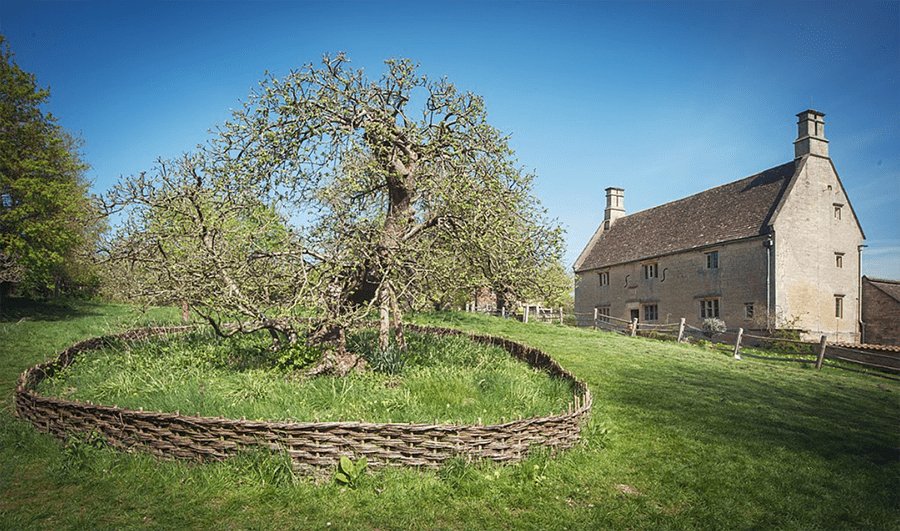
1652 - Isaac Newton was born at Woolsthorpe Manor. From Newton’s bedroom window, you can see the apple tree that inspired his thinking on gravity. The tree blew down in a storm in the 19th century but re-rooted itself and still produces apples and is now over 350 years old, which is very old for an apple tree.
The Llangernyw Yew
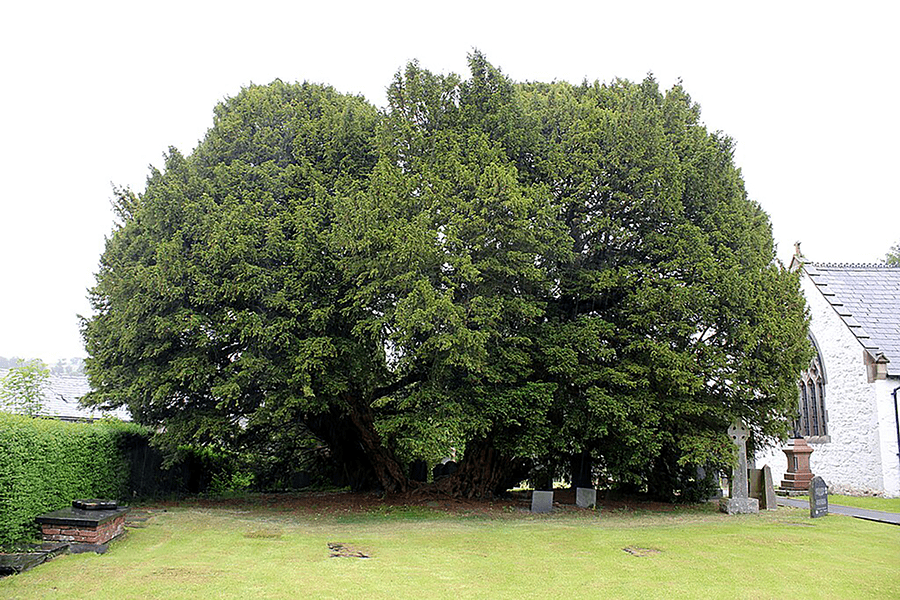
The Fortingall Yew
In Perthshire stands within a churchyard. Another of the UK’s oldest trees, with an estimated age between 2,000 and 3,000 years (although some say it could be as old as 9000 years) which makes it one of the oldest living things in Europe. Folk tales say that funeral processions used to pass through the arch formed by its split trunk.Ankerwycke Yew
In Staines, Middx. Estimated to be around 2,500 years old. That means it started growing in around 476 BC. Think about what the world was like and what this tree has seen passing it by - it’s crazy to think about. Some accounts say that the Magna Carta was signed by the Ankerwycke Yew (others say it took place on the other side of the River Thames at Runnymede). It is also said to be the place where Henry VIII had his first liaisons with Anne Boleyn in the 1530s.The Crowhurst Yew
It pre-dates the arrival of William the Conqueror. A cannonball was discovered lodged deep inside the trunk. Legend has it, during the Civil War of the mid-17th century, the cannonball was fired during a nearby battle, and it embedded itself deep into the yew tree.Skipton Castle Yew
In Yorkshire – Planted in 1659. Skipton Castle was the last northern stronghold of the English Civil War. It is still standing.The Fraternal Four
Yew Trees Borrowdale, Cumbria. The Fraternal Four inspired William Wordsworth’s poem ‘Yew Trees,’ written in 1803. The trees are known to be at least 1500 years old but it is likely they are much older, pre-dating the Romans. They were originally thought to be separate trees, but it’s now been proven that they all grew from the same tree.“But worthier still of note
Are those fraternal Four of Borrowdale,
Joined in one solemn and capacious grove;
Huge trunks! -and each particular trunk a growth
Of intertwisted fibres serpentine.”
– William Wordsworth
Wilberforce Oak
In the grounds of Holwood House, Kent. The tree was named after William Wilberforce, the anti-slavery campaigner. And it was under the tree he made this vow in 1788. “At length I well remember after a conversation with Mr. Pitt, in the open air, at the root of an old tree at Holwood….I resolved to give notice on a fit occasion in the house of commons of my intention to bring forward the abolition of the slave trade.” Sadly, the Tree was blown down in 1991, but I am including, given its important place in history.Birnam Oak
In Perthshire Scotland – Shakespeare’s Birnam Wood. “Macbeth shall never vanquished be until Great Birnam wood to high Dunsinane hill shall come against him.” All that survives of Shakespeare’s Birnam Wood is the Birnam oak and its neighbour the Birnam Sycamore. Estimated to be around 600 years old with a 7m girth, but its trunk is now hollow. At some time in the past, there has clearly been a fire inside the trunk, but the tree is still living.The Bowthorpe Oak
In Lincolnshire, over 1,000 years old. Almost double the size with an immense 13.5-metre girth. It is now hollowed out, but in the past, it has been used by locals for dinner parties and small parties. Some claim that 36 people managed to squeeze inside for one such get-together. An annual tea party is still held inside the tree for the children from the local chapel.Major Oak
In Edwinstowe, England – Sherwood Forest. The Major Oak is one of the biggest oak trees in Britain, the largest in Sherwood Forest, with a canopy spread of 28 metres, a trunk circumference of 11 metres and an estimated weight of 23 tonnes. Steeped in legend around Robin Hood and it would have been alive at that time. And was once known as First Cockpen Tree after cockfighting that took place beneath it.Druids Oak
In Caton Lancashire - Once a marketplace for medieval monks from Cockersands Abbey. “Druid” means “oak knowledge.”Gog and Magog
Two oaks that stand at the foot of Glastonbury Tor in Somerset estimated to be over 2000 years old.Big Belly Oak
In Savernake Forest - around 1000 years old – dates back to around Norman Conquest.Tolpuddle Sycamore Tree
In the small Dorset village of Tolpuddle. An old, gnarled tree which played an important role in the story of the Tolpuddle uprising, where a group of agricultural labourers met to discuss demands for better pay, in effect creating the first-ever trade union. It was 150 years old when the labourers met under this tree in the 1830s.Sycamore Gap
Next to Hadrian's Wall near Crag Lough in Northumberland – Sadly this iconic tree was felled in an act of vandalism in 2023. Which shocked people across the UK. And I am including here as it shows how important it is to protect our ancient trees and how important they are to us all.Westonbirt Lime Tree
Estimated to be around 2,000 years old. This tree is coppiced (cut back) every 20 years to allow it to keep growing. It is believed that this practice has been done since the 13th century, and is a reason for this tree’s longevity. Around 60 stems grow out from the original tree, and it’s being celebrated with a nearby sculpture.Tortworth Sweet Chestnut
Steeped in legends, some say it was planted from a nut during the reign of King Egbert in 800 AD. The girth is a giant 12m.Glen Lyon Ash Tree
In Perthshire is estimated to be 3-400 years old which is very old for an Ash tree.Aspen Tree
The Pando. Then I must include The Pando. It is the inspiration for Eye The Elder. It is in Utah in the USA. Check it out, it is a super cool tree. The largest living organism in the world that has been DNA tested. “Pando is believed to be the largest, most dense organism ever found at nearly 13 million pounds. The clone spreads over 106 acres, consisting of over 40,000 individual trees. The exact age of the clone and its root system is difficult to calculate, but it is estimated to have started at the end of the last ice age. Some of the trees are over 130 years old. It was first recognized by researchers in the 1970s and more recently proven by geneticists. Its massive size, weight, and prehistoric age have caused worldwide fame.”Charity organizations
Please consider donating to these wonderful organizations, your contributions can make a significant impact: